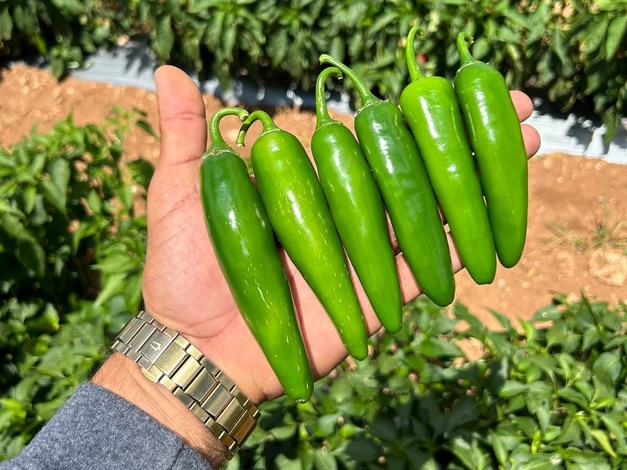It hasn’t been an easy growing season for hot peppers in Mexico as the weather has significantly affected supplies. “The heat has been unprecedented and is taking a big toll on all varieties,” says Jimmy Garza with Bebo Fresh in Texas. “Just like everybody else, we’re struggling with supply.” While Bebo harvests their hot peppers year-round in different parts of Mexico, volume is down everywhere. “We rotate from the Central part to the West, but the transition has been hard to coordinate this season, and we’re having to pivot a lot,” Garza shared.
Open field volatility
Hot peppers are still grown the traditional way, in an open field. “There is much more volatility compared to a controlled environment like a shade house or a greenhouse,” said Garza. “I feel the windows in the open field have been shortening, and we are increasingly impacted by climate issues.” Growers are faced with the dilemma between growing in an open field or in a controlled environment. “There is an opportunity to grow hot peppers in a controlled environment, but we would need the right price point consistently in order to justify the investment. There’s a significant risk involved in investing in a new crop. Growers are becoming gun-shy when it comes to making these sorts of investments. They are weaning away from them.”
With supplies being highly volatile this season, demand is outpacing supply. Jalapenos, Serranos, Poblanos, etc., are all impacted. As a result, prices are elevated. “Across the board, we are seeing a 25 percent higher price point,” commented Garza. Serranos are running at $1/lb. at wholesale level, while Poblanos are about $2/lb. wholesale. As a result of increased input costs as well as inflation, price increases have become common and aren’t new for too long. “The new highs become the norm.”

Gauging the consumer
While demand is higher than supply, it doesn’t mean the consumer just buys what’s available. “Consumers have become well educated on the types of hot peppers they want,” said Garza. “There is so much variation, and if we have a smaller size Jalapeno, they prefer a bigger one, or they ask for a striped hot pepper variety. It has been tough to gauge what the consumer wants.”
“All in all, it is a tough year for hot peppers, and everyone is feeling the pressure.”
For more information:
Jimmy Garza
Bebo Fresh
Tel.: (+1) 956-627-3302
[email protected]
www.bebofresh.com
